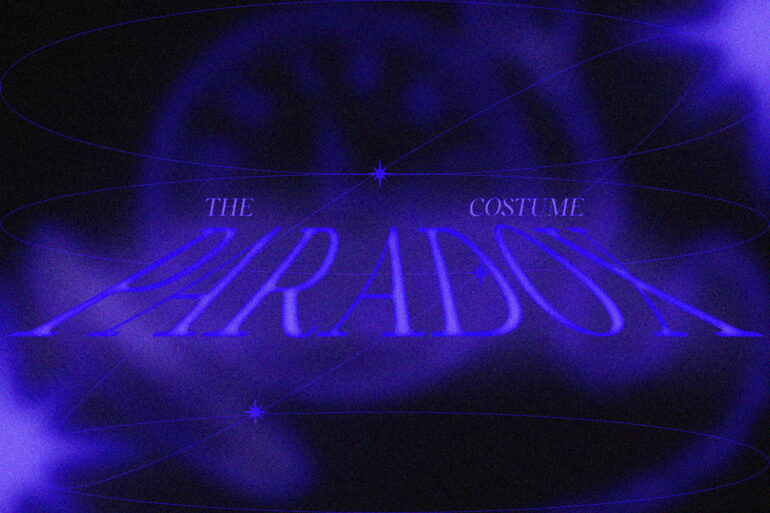Halloween allows the freedom to dress eccentrically with little judgment. Any sort of bizarre garb can be justified by the fact that it’s a holiday for dressing up. Throughout the history of Halloween people have followed this rule, though methods of expressing creativity and alternate selves with costumes changed.
Since the beginning of Halloween traditions people have made their own costumes. As early as the 1920s, costume patterns like this Butterick brand one have existed, though this certainly wasn’t the only way people got crafty with their costumes. Some common costume crafting methods that have been used for decades are paper mache, styling clothes or textiles into an ensemble, or using makeup in an expressive way.
Some particularly intriguing samples of hand made pieces from the past are this butterfly costume from the 80’s using a crinoline from the 1940’s and this 1950’s queen of hearts costume utilizing various unique textiles. The concept of store bought costumes is relatively new due to commercialization.
The first rendition of the ready made costume was the disposable paper costume of the 1920’s. Paper costumes could be handmade by sewing the paper in the same way one would use fabric but were also often bought in stores. These tended to be made of textured crepe paper which has a wavy look and a stretchy quality. The paper costume was often made to be typical halloween characters or animals like this unique bee paper set. At the time these disposable garments were not just exclusive to Halloween. Brightly colored paper dresses were also worn for masquerade balls which were popular at the time and had no particular season.
The 1930’s began the start of mass produced character costumes which were available in department stores. Film companies released costume merchandise of their trademark characters from kids media. This was not exactly a common purchase at the time, but the plastic mask type of costume grew in popularity throughout the years and remained prevalent up until the 90’s.
The typical formula for a character costume was a thin plastic mask resembling a character’s face with an elastic string. This was paired with a loose polyester, rayon, or plastic garment with a print. The outfit piece was typically oversized so it would be able to fit most people and could be reworn for longer. This 1960’s skeleton and 1970’s orphan Annie mask costume are examples of the trend.
In the 1950’s a notable change occurred in manufacturing of costumes as safety regulation around fabric flammability began. Many costumes like this spider one from the 1960’s started to be advertised as flame retardant, though safety standards for textiles used in these were not nearly as well regulated as other types of clothing.
It wasn’t until the 1970’s that a more flattering adult halloween costume hit the market. Early versions of shapely costumes were mostly dresses targeted towards teen and young adult women like this maid uniform dress costume.These rose in popularity when seasonal halloween stores like Spirit Halloween opened in the 1980’s and offered an easier way to shop with a wider variety of costumes.
In recent times costumes have become nearly as easy to source as any other garment. With the rise of fast fashion and the internet there is a plethora of mass produced costumes to choose from. After looking back into history perhaps we can take inspiration from the ways of putting together a costume and create something truly original. Whether we plan to make our own looks or purchase something, Halloween is a day to be anyone, so be something that is incredibly you.
Words by Ava Schroeder.
Graphic by Trish Pham.

